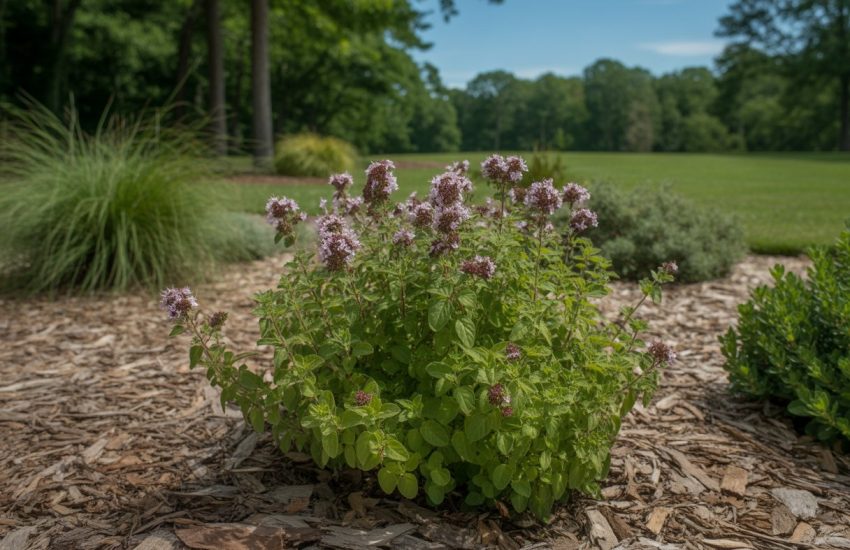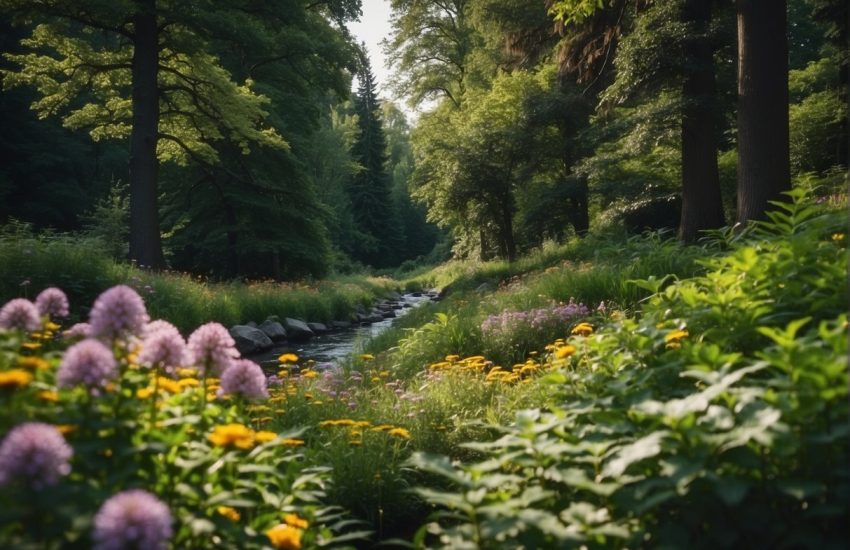Native Parsley for Ohio: Identification, Growing Tips, and Uses
When people talk about native parsley in Ohio, they usually mean Petroselinum crispum. Funny enough, that’s not actually native, but it’s become pretty common around here. Still, Ohio hosts several native plants with parsley vibes—think Zizia aurea (golden alexanders) and some Lomatium species, all hanging out in the Apiaceae family.
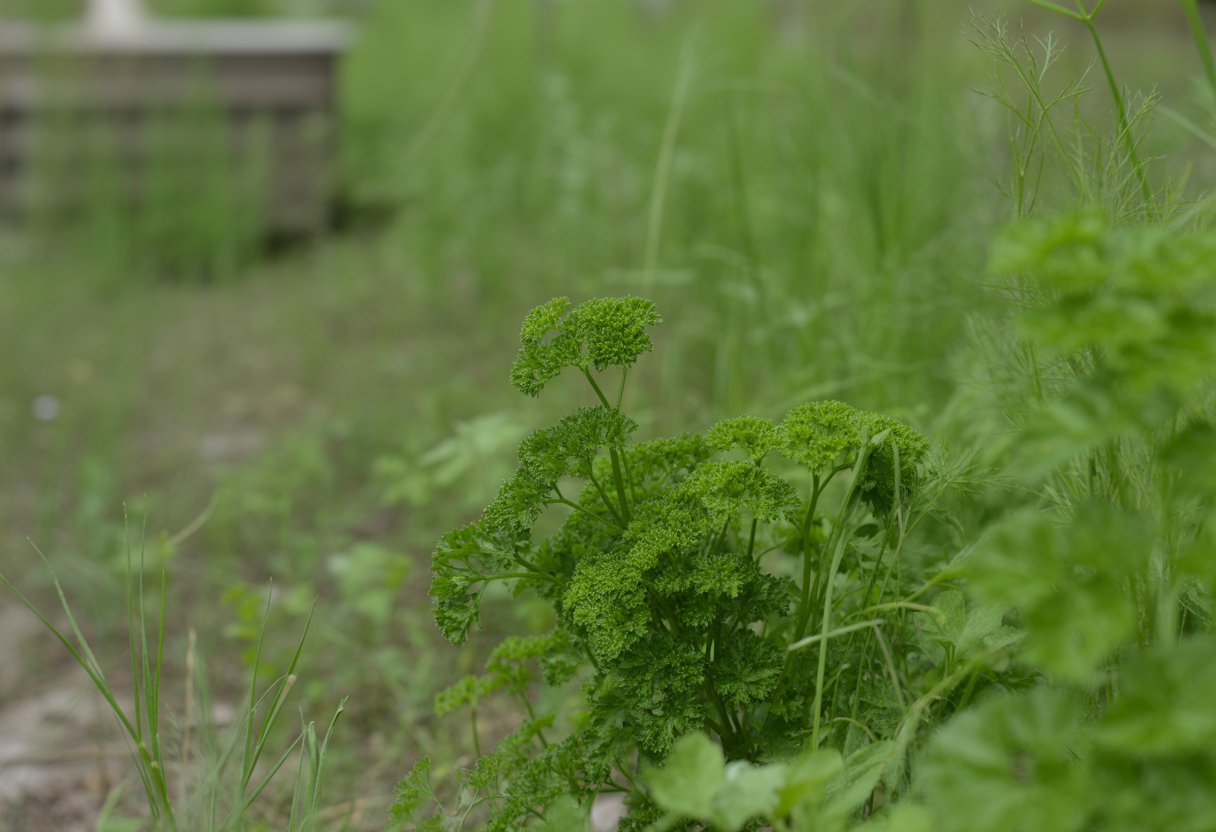
If you’re a gardener or forager after truly native options, these Apiaceae plants are worth a look. They’re tough, well-suited to Ohio’s weather, and help out the local ecosystem, so they make great alternatives to the store-bought stuff.
It’s helpful to know the difference between culinary parsley and its native cousins. That way, you can make sustainable choices and maybe even give a little boost to local biodiversity while still getting that familiar parsley look—or at least something close.
Understanding Native Parsley in Ohio
Native parsley in Ohio is a group of plants in the parsley family, Apiaceae, that popped up here on their own. They’re important for the local ecosystem and have a few things in common with culinary parsley.
What Qualifies as Native Parsley
These native species in the Apiaceae family have been around in Ohio since before European settlers showed up. They’ve adapted to the local climate and soil, so they’re pretty much part of the scenery now.
When we say “parsley,” we mean wild, herbaceous plants that are related to the stuff you buy at the grocery store. They play a role in supporting wildlife and fit right into the local food web. If it was brought in by humans or acts invasive, it doesn’t count as native parsley.
Parsley Species Native to Ohio
A few Apiaceae species in Ohio can claim the “native parsley” title based on their looks and family ties. Some of the most common:
- Zizia aurea (Golden Alexanders)
- Conioselinum chinense (Chinese Hemlock Parsley)
- Osmorhiza claytonii (Sweet Cicely)
They’ve all got those classic compound umbels, hollow stems, and finely divided leaves you’d expect. None of them are the parsley you sprinkle on pasta, but family resemblance is there.
Each has its own preferences. Golden Alexanders likes moist meadows and shows off yellow flowers in spring. Sweet Cicely hangs out in woodlands, has white flowers, and even smells like licorice.
Native Range and Distribution
You’ll find these native parsley species all over Ohio—in forests, prairies, and wet meadows. Zizia aurea is especially common in moist spots, mostly in the central and southern parts of the state.
Osmorhiza claytonii prefers shady, upland hardwood forests, especially in eastern Ohio. Where they grow depends on things like soil moisture, sunlight, and what else is growing nearby.
They’re part of what makes Ohio’s wildflowers so interesting and help support native insects. When you spot them, you know you’re looking at a healthy patch of native plants.
Key Characteristics and Identification
Native parsley in Ohio stands out if you know what to look for. It’s got certain flower structures and leaf shapes that set it apart from imposters.
Morphological Features
You’ll notice native parsley has finely divided, bright green leaves with a soft feel. Its stems are usually hollow and a little ridged.
The flowers show up in small or medium umbels, with tiny white blooms. Each flower has notched petals—a neat little detail. The umbels are generally flat-topped or slightly rounded.
These plants usually grow anywhere from 1 to 3 feet tall. They look delicate, but there’s a certain structure to them that’s classic Apiaceae.
Distinguishing Native Parsley from Invasive Species
People sometimes mix up native parsley with invasive lookalikes like Aethusa cynapium (fool’s parsley) or even Ruta graveolens (rue). Native parsley’s leaves aren’t as shiny, and they don’t have those weird, strong smells.
Invasive species often have chunkier or messier leaf divisions and can stink up the place. Native parsley’s umbels are more uniform and not as dense. Plus, it tends to flower earlier in spring, while the invasive types lag behind.
Common Lookalikes and Comparison
It’s easy to confuse native parsley with herbs like cilantro or dill, but there are differences. Cilantro has broader leaves and skips the notched petal thing. Dill’s leaves are feathery, a bit yellowish, and its umbels are more fragile.
Rue stands out with its bluish-green, thick leaves and a really bitter smell. Here’s a quick breakdown:
| Plant | Leaf Texture | Flower Petals | Stem | Scent |
|---|---|---|---|---|
| Native Parsley | Finely divided, soft | Notched | Hollow, ridged | Mild, herbaceous |
| Cilantro | Broader, flat | Smooth | Solid | Strong, citrusy |
| Dill | Feathery, light green | Smooth | Hollow | Aromatic, strong |
| Rue | Thick, bluish-green | Smooth | Solid, woody | Strong, bitter |
Getting familiar with these traits makes it way easier to spot and protect native parsley.
Ecological Importance and Wildlife Benefits
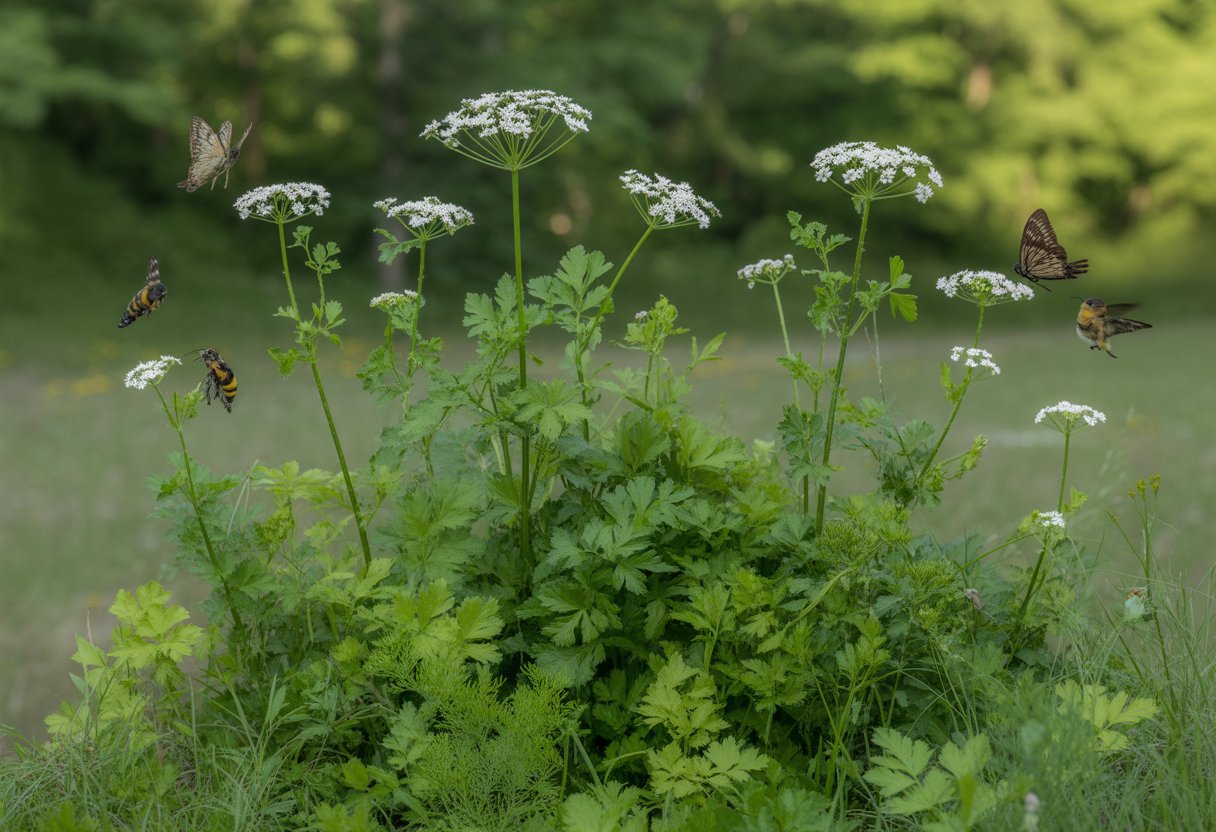
Native parsley in Ohio isn’t just there for looks—it’s a lifeline for a bunch of insects and helps keep the local ecosystem humming. Its nectar, pollen, and role as a host plant make it vital for wildlife and even useful for people.
Role in Supporting Pollinators
When native parsley blooms, its tiny flowers are loaded with nectar and pollen. Bees—both native ones and honeybees—are all over it during the season.
The flower shape makes it easy for pollinators to get what they need. If you’ve got native parsley in your vegetable garden, you might notice more pollinators showing up and helping out with other plants too.
Attracting Caterpillars and Butterflies
Butterflies and moths use native parsley as a host for their caterpillars. The larvae munch on the leaves, which helps butterfly numbers stay up. Black swallowtail butterflies, for example, pretty much count on parsley relatives for their young.
If you plant native parsley with milkweed and other native flowers, you’ll give butterflies and caterpillars a solid place to hang out.
Native Parsley in Local Ecosystems
You’ll see native parsley in woodland edges, meadows, and prairies across Ohio. It’s a mid-level food source and adds to the mix of plants in these spots.
As it dies back, it puts organic matter into the soil, which is always good. It also gives ground insects and small critters some cover.
Traditional Uses by Native American Communities
Native American communities in Ohio used native parsley for both food and medicine. They ate the leaves and stems fresh or dried, and sometimes used it in remedies for minor issues.
Knowing this history adds another layer to why these plants matter—not just for wildlife, but for people too.
Growing and Caring for Native Parsley in Ohio
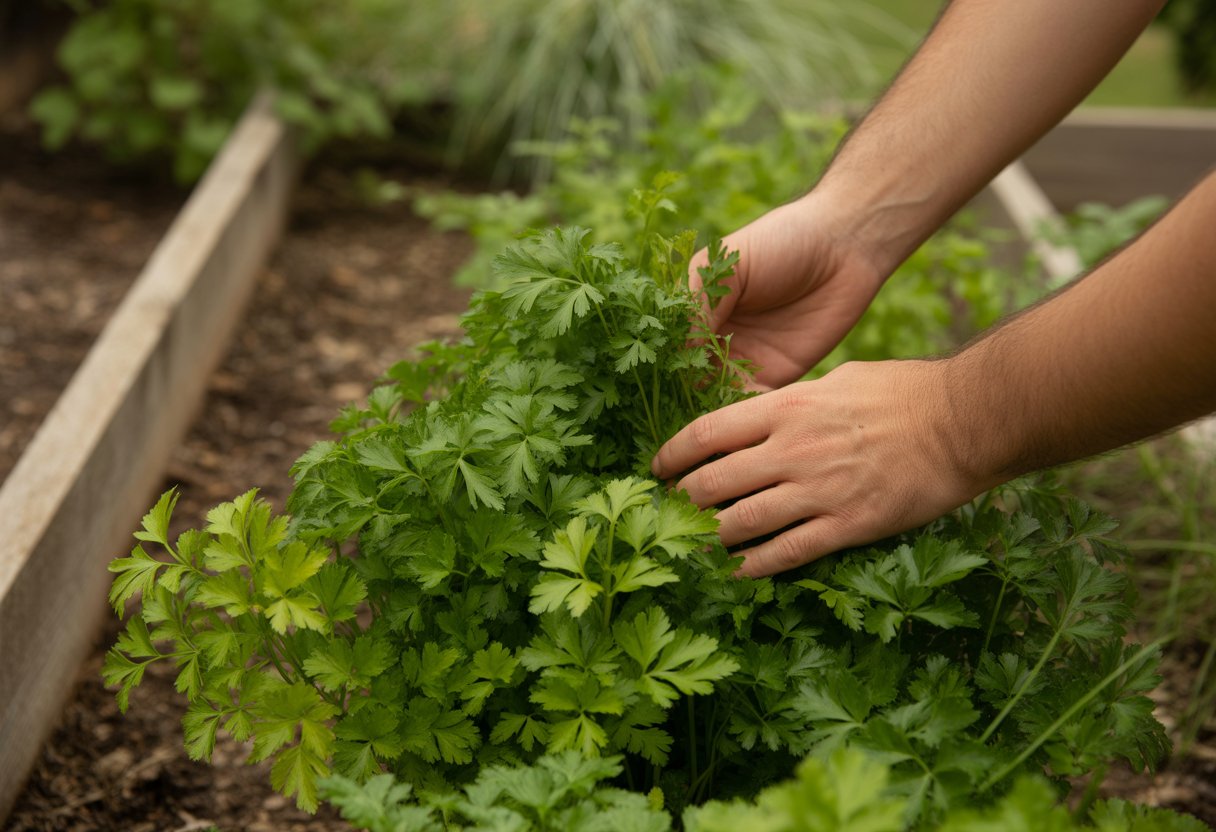
Native parsley does best if you pay attention to soil, light, and companion plants. It likes well-drained soil and a spot that gets sun or at least a little shade. Give it regular water and a bit of pruning, and you’ll keep it happy.
Best Practices for Planting Native Parsley
Full sun is great, but native parsley can handle some shade, especially when Ohio’s summer gets toasty. It prefers well-drained, slightly acidic to neutral soil, somewhere around pH 6.0 to 7.0. If your soil is heavy clay, try to lighten it up a bit.
Start seeds or seedlings in early spring, after the last frost. Sow seeds about a quarter inch deep and keep the soil damp until they sprout, which usually takes two or three weeks. Space them 12 to 18 inches apart for airflow and to help prevent disease.
These plants are perennial, so mulch helps keep moisture in and the soil temperature steady. Don’t crowd them—fungus loves that. If you need to move them, do it gently so you don’t mess up the roots.
Companion Plants and Garden Integration
Native parsley gets along well with herbs like mint—just watch out, since mint can take over if you let it. It also pairs nicely with native prairie plants like rattlesnake master and blue eryngo.
These plants like similar conditions, so they make good neighbors. Planting native parsley with other natives draws in pollinators and helpful bugs.
Try to avoid planting it near aggressive groundcovers—they’ll crowd it out. Mixing it with other herbs keeps things diverse and helps the whole garden stay healthier.
Seasonal Care and Maintenance
In spring and summer, keep the soil evenly moist. Don’t let it get waterlogged, though—native parsley hates soggy feet.
It can handle a short dry spell, but honestly, it does better with regular watering. I usually stick with drip irrigation or just water at the base to help avoid leaf diseases.
Prune off any dead or yellowing leaves to help air move through the plant. In late fall, after the seeds have dropped, cut the plant back to get it ready for winter.
Toss on a layer of mulch before the real cold hits. That extra insulation goes a long way for the roots during Ohio’s winters.
Keep an eye out for powdery mildew or leaf spots. If you spot any, just snip off the affected leaves right away.
You probably won’t need fertilizer unless your soil’s really lacking. If it seems necessary, a light dose of balanced fertilizer in early spring should do the trick.

